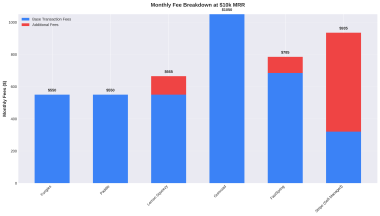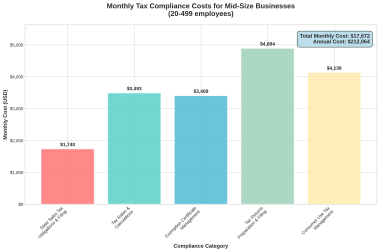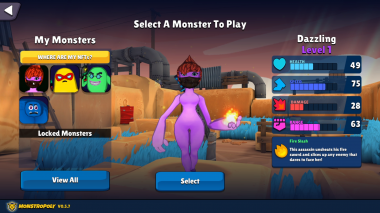Discover effective strategies for revenue generation in mobile gaming. Explore different mobile game business models and boost profits for your game.
Ever wonder how those awesome free games you play on your phone make money? It’s not magic! There’s a whole world of strategy behind those games, and it all comes down to the mobile game business model. This fancy term means the way a game makes money.
The mobile gaming market was valued at USD 118.34 billion in 2023 and would reach USD 138.63 billion by 2031. To get your fair share, Picking the right business model is very important for game developers. It determines how much money the game can make.
So, let’s learn the secrets behind successful mobile games!
What is a Mobile Game Business Model?
Remember how we talked about how mobile games can be free to download but still rake in the cash? That’s all thanks to something called a mobile game business model. Think of it like a game plan for how the game will make money. Every mobile game has one, and it affects how the game is designed, and advertised, and even how much fun it is to play! So, what is a mobile game business model? Let’s break it down.
There are two main things to consider:
- How Players Pay (or Don’t!): This is all about how players spend money in the game, if at all. There are different ways to do this, like selling in-app purchases or showing players short ads (those video things you see sometimes). Some games are even totally free to play without spending a dime!
- How Players Get the Game: This refers to how players download and start playing the game. Will it be completely free to download, or will there be a one-time purchase price? This decision depends on the kind of game it is and how the developers plan to make money elsewhere (like through in-app purchases).
By figuring out these two things, developers can create a business model that lets them make money while keeping players happy. Pretty cool, right? In the next section, we’ll dive deeper into the different types of mobile game business models and see how they work!
How Do Mobile Games Make Money?
We’ve learned that mobile games use something called a business model to figure out how they’ll make money. But with so many free games out there, how do developers actually turn a profit?
Here are a few of the most popular ways mobile games make money:
Freemium: Free to Play, But Fun Extras Cost a Little
The freemium model is a popular choice for mobile games. Here’s how it works: you can download and play the game for free. But there are cool things you can buy inside the game with real money, like faster upgrades or new characters. Think of it like getting a free toy car to play with, but there are awesome accessories you can buy separately.
Examples of Freemium Games: Candy Crush Saga, Angry Birds, Pokemon Go
Pros: This model lets developers build a large user base because the game is free to play. They can still make money from players who want extra goodies, which can lead to high revenue!
Cons: Balancing the free and paid content can be tricky. You don’t want players to feel like they have to spend money to enjoy the game. If it’s too hard to progress without buying stuff, players might get frustrated and quit. Finding the right balance is key!
In-App Purchases (IAP): Buy Stuff Inside the Game!
Ever play a game where you can buy cool things directly within the app? That’s In-App Purchases (IAP) at work! It’s a way for players to spend real money on virtual goods they can use in the game. These goods can be anything from cosmetic items, like fancy outfits for your character, to power-ups that make the game easier. Think of it like buying fun add-ons for a toy you already have.
Examples of IAP in Games:
- Candy Crush Saga (extra lives, boosters): Need an extra life to keep playing Candy Crush? You can buy one with IAP!
- Clash of Clans (faster resource gathering): Want to build your village in Clash of Clans faster? An IAP can speed things up!
- Fortnite (character skins): Like to look stylish in Fortnite? IAP lets you buy cool outfits for your character!
Here’s a cool tip for developers:
Fungies provides an in-game store builder! This lets you create a shop right inside your game, where players can spend their hard-earned in-game currency on all sorts of awesome stuff. Pretty neat, right?
In-App Ads: Short Videos, Big Money
Those short video ads you see in between levels or while waiting in games. Those are in-app ads, and they’re another way mobile games make money. Basically, developers get paid a small amount every time a player watches an ad. It’s kind of like watching a short commercial before you get back to playing with your favorite toy. Some games even let you watch an ad to get a free life or a little boost in the game!
There are different types of in-app ads:
- Banner Ads: These are small ads that appear at the top or bottom of the screen while you play.
- Interstitial Ads: These are full-screen ads that pop up between levels or at certain points in the game.
- Rewarded Video Ads: These are ads you can choose to watch in exchange for a reward in the game, like a free life or extra points.
Subscription Models: Monthly Perks for Your Favorite Game
Some games offer subscriptions, which are like a monthly membership. By paying a small fee regularly, you can unlock special features or bonuses in the game, like exclusive characters or early access to new content. Think of it like joining a club for your favorite game!
Examples of Subscription Games: Apple Arcade (access to a library of games for a monthly fee), Google Play Pass (similar to Apple Arcade)
Pay-to-Play: The OG Way
This is the classic model where you pay a one-time fee to download and play the entire game. It’s less common these days, but some games with really high-quality graphics or long storylines might still use it.
Examples of Pay-to-Play Games: Minecraft (classic version), Grand Theft Auto: San Andreas
Hybrid Models: Mixing and Matching for Success
Many games use a hybrid model, which means they combine different business models. For example, a game might be free to download with in-app purchases (freemium) or you might have to pay to download the game. But there are also optional in-app purchases (pay-to-play with IAP). This lets developers experiment and see what works best for their game and audience.
Benefits of Hybrid Models:
- More ways to make money
- Cater to different player preferences.
Challenges of Hybrid Models:
- Balancing the different elements
- Making sure it doesn’t feel confusing for players.
Blockchain and NFTs: The Future of Mobile Game Monetization Models?
Blockchain and NFTs (non-fungible tokens) are new technologies that are starting to be used in mobile games. They allow players to own unique digital items within the game, like special characters or weapons. These items can then be traded or sold to other players, creating a
How Does Monetization Differ Between iOS and Android?
So we’ve explored all the cool ways mobile games make money, but guess what? The way they do it can actually differ depending on which app store you use – Apple’s App Store or Google Play.
App Store Rules: Jumping Through Hoops
Both stores have rules about how developers can submit and sell their games. Apple’s App Store can be a bit stricter, with a longer approval process and more guidelines for developers to follow. They also take a bigger cut (around 30%) of every sale made through the app. That means for every $10 someone spends on your game, Apple keeps $3! Ouch!
Google Play’s Open Door
Google Play tends to be a bit more relaxed, with a faster approval process and fewer restrictions. They also take a smaller cut (around 30% as well, but some developers can qualify for lower rates). This can be a good option for developers who want to get their game out there quickly and keep more of the profits.
Monetization Magic Around the World
Even within the iOS and Android ecosystems, things can change depending on where your players are from. For example, in-app purchases might be super popular in one country, while ads might be more effective in another. So, it’s important to adapt your monetization strategy to fit the specific region or market you’re targeting.
Thinking Outside the App Store Box
Here’s a cool tip for developers who want to keep more of their hard-earned cash: Fungies lets you build your own web store directly into your game! This way, players can buy your game directly from you, and you only pay a tiny 5% commission fee. That’s a way bigger slice of the pie for you!
So, there you have it! Monetization in the mobile game world can be a bit of a juggling act. But by understanding the differences between app stores and adapting your strategy, you can make sure your game is a financial winner!
How to Choose the Right Mobile Game Business Model
We’ve learned a ton about how mobile games make money with all these different business models. But with so many options, how do developers choose the right one for their game? Here are some key things to consider:
1. Know Your Game:
This might seem obvious, but the type of game you’re making plays a big role. A complex strategy game might be a good fit for a pay-to-play model, while a casual puzzle game might do better as freemium with in-app purchases. Think about how the gameplay and features would work best with a specific monetization strategy.
2. Who’s Your Player?
Not all players are created equal! Some gamers might be happy to spend a few bucks on a cool game, while others might prefer free-to-play with ads. Research your target audience and see what kind of monetization model they typically respond to.
3. Competition Check:
Take a peek at other games in your genre. What kind of business models are they using? Are they successful? Seeing what works (and what doesn’t) for similar games can be a great way to get some inspiration.
4. Experiment and Adapt:
The mobile game world is constantly changing. Don’t be afraid to try out different monetization strategies and see what works best for your game. You can always adjust your approach based on how players respond.
5. Keeping Costs in Mind:
Remember, developing a game costs money too! Factor in your development costs when choosing a business model. For example, a free-to-play model might require more ongoing maintenance to keep players engaged. While a pay-to-play model might have a higher upfront cost for marketing.
By considering these factors, developers can choose a mobile game monetization model that sets their game up for success!
Final thoughts
So, there you have it! This whistle-stop tour of what is a mobile game business model has hopefully given you a good idea of how do mobile games make money. From freemium fun to pay-to-play classics, there’s a strategy out there for every type of game.
Remember, the key to success is choosing the model that best fits your game and target audience. With a little planning and creativity, you can turn your mobile game into a real money-making machine! Happy developing!
FAQs
What are the most common mobile game business models?
There are a few main options! Free-to-play with in-app purchases lets you play for free but buy cool stuff inside the game. Pay-to-play means buying the game upfront. Subscription models offer exclusive features for a monthly fee.
How do I choose the right business model?
Consider your game type, target audience, and development costs. See what similar games do and be flexible – you can always adjust your approach later!
How can I maximize revenue?
It depends on your model! For in-app purchases, offer exciting extras players will want. With ads, experiment with placement to find the sweet spot. Keep players engaged no matter what model you choose!






